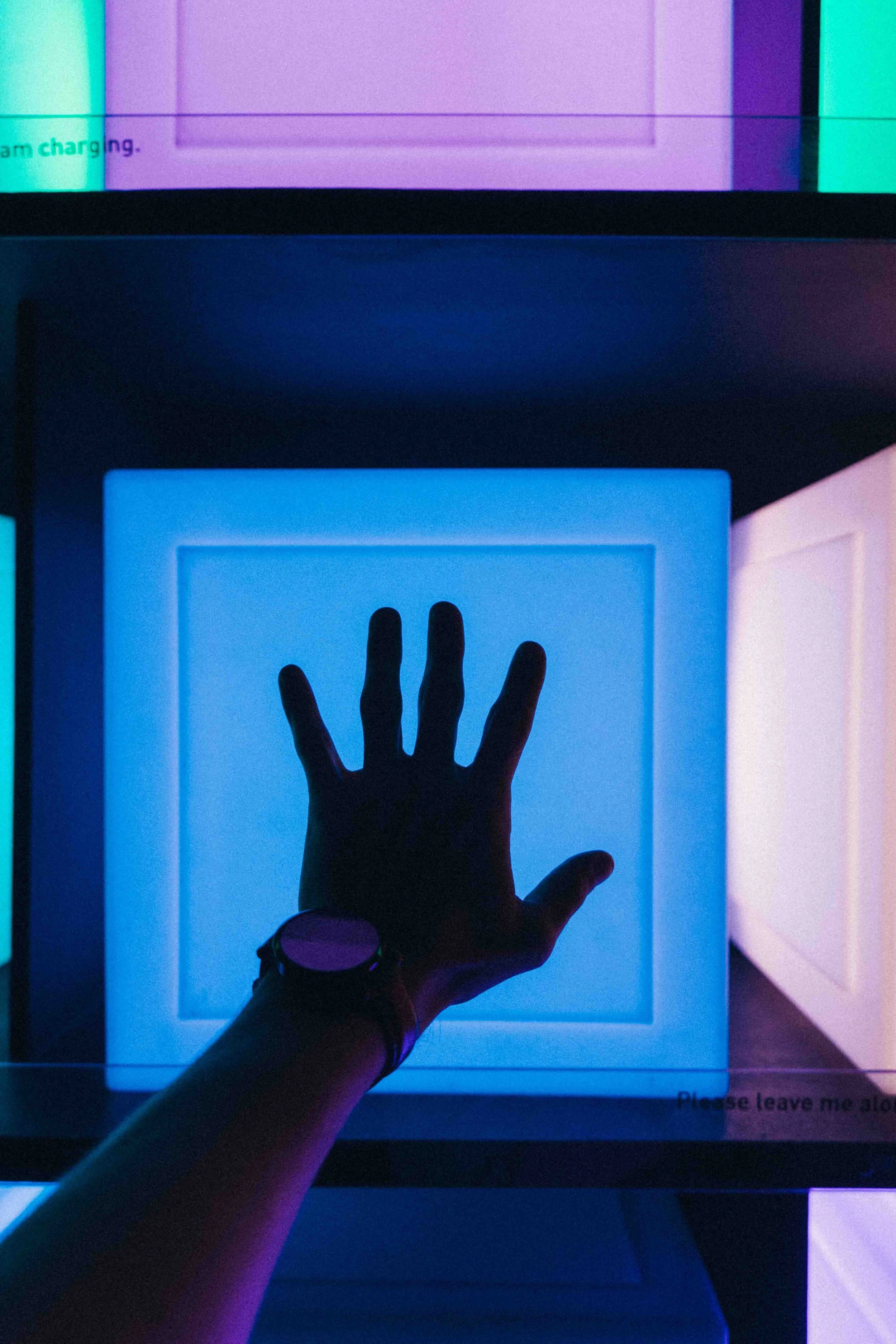incomplete futures
Multimodal XR platforms, akin to those shown in Spielberg’s 2018 film adaptation of Ready Player One (2011), will see humans connect, be educated, entertained, and employed within synthetic worlds.
However, we feel that such visions of the future are incomplete, unrealistic, and somewhat dystopian. They portray humans as emotionless agents in a world where the experience and richness of interaction is heavily dependent on visual content and touch serves a purely functional purpose (i.e., supports grasping objects).
touch is not just a functional element replaceable by good visuals.
Our Vision
is that intelligent machines and autonomous systems will be able to seamlessly modulate our emotional experiences through touchless haptic technologies. Beyond delivering more engaging content, this technology will elicit emotional responses required to support people, such as in mimicking social touch in distressing situations or provide enhanced engagement for remote or collocated experiences.
█haptic technologies
Touchless haptic technologies induce tactile sensations remotely, without the need to wear or hold any controllers, or contact tactile displays. This makes touchless technologies hygienic, easy to use, and pervasive (i.e., can be deployed almost anywhere and facilitate spatial untethered interactions in 3D space).
This is in stark contrast to contact and wearable haptic technologies which usually need to be battery or mains powered, can only facilitate surface interactions, and are unidirectional to the wearer. Touchless haptics is a relatively new field of research that has been pioneered by Ultraleap (a project partner) and the project coordinator Prof. Subramanian.
█Neurocognitive models of touch
Humans make all kinds of decisions about what emotions they perceive from others during tactile interaction. Neurocognitive models of this perception postulates that our brain first extracts sensory information about the world then integrates that data and then interprets it. For touch interactions, low-level neurocognitive models of the stimulus-sensation interface, combined with high-level models of the global experience and models of personal space can be captured, studied, and replayed through touchless haptic technologies to change how an individual experiences the environment.
█Artificial Intelligence
Artificial Intelligence (AI) is what powers recommendation engines and enables them to make quick and to-the-point recommendations tailored to our needs and preferences.
Taking this idea forward, AI will soon play an essential role in enabling efficient sensing of human experience and in understanding the actual and desired future state of our human-computer interactions and will be a key driver in future haptic technologies.
█ethics & responsibility
Because the haptic effects on surfaces (smartphones and tablets) are fairly basic and mostly functional, the ethics and responsibility discussion relating to how users can opt-in or opt-out and give permissions to such apps to use the onboard actuators and vibrators found on their devices is still at its infancy.
With touchless haptics which are not screen-bound and require no physical contact, ethics and responsibility research untangles in a whole new dimension as users will not necessarily own the haptic device and haptic experiences will simply become modulators of a larger spectrum of emotions and psychological aspects.
The TOUCHLESS project therefore adopts an embedded ethics approach, where ethics research is directly linked to technical and scientific activities and that are also industry inclusive.
Read more about our team or get in contact for more info or collaboration opportunities.









